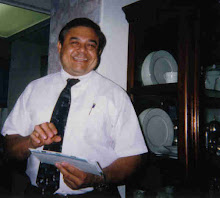
What were the tunnels of Cu Chi and how did it play a part in the Vietnam war? These tunnels were intricate underground passage ways that the Viet Cong used to hide their supplies and live underground to avoid the daily bombardment from the American planes. In addition, these tunnels were also used to transport supplies to Ho Chi Minh City (formely Saigon) to resupply the Viet Cong in their fight against the United States military forces.
The tunnels of Củ Chi still exist and are an immense network of connecting underground tunnels located in the Củ Chi district of Ho Chi Minh City (Saigon), Vietnam, and are part of a much larger network of tunnels that underlie much of the country. The Củ Chi tunnels were the location of several military campaigns during the Vietnam War, and were the Viet Cong's base of operations for the Tết Offensive in 1968. In addition, these tunnels were used by Viet Cong guerrillas as hiding spots during combat, as well as serving as communication and supply routes, hospitals, food and weapon caches and living quarters for numerous guerrilla fighters. The role of the tunnel systems should not be underestimated in its importance to the Viet Cong in resisting American operations and protracting the war, eventually persuading the United States military into withdrawal.
What was life like in these tunnels for some American GI's who were called "tunnel rats"? American soldiers used the term "Black echo" to describe the conditions within the tunnels. For the Viet Cong, life in the tunnels was difficult. Air, food and water were scarce and the tunnels were infested with ants, poisonous centipedes, spiders and mosquitoes. Most of the time, guerrillas would spend the day in the tunnels working or resting and come out only at night to scavenge for supplies, tend their crops or engage the enemy in battle. Sometimes, during periods of heavy bombing or American troop movement, they would be forced to remain underground for many days at a time. Sickness was rampant among the people living in the tunnels; especially malaria, which accounted for the second largest cause of death next to battle wounds. A captured Viet Cong report suggests that at any given time half of a PLAF unit had malaria and that “one-hundred percent had intestinal parasites of significance.” In spite of these hardships, the Viet Cong managed to wage campaigns against a partially conscripted army that was technologically far superior, eventually wearing down their the United States.
Every time that a "tunnel rat", term used to describe a U.S. soldier, went underground, his life was always at stake. His basic job was to locate the enemy and report back to his command. It was a dangerous mission to undertake as many of these tunnels were sabotaged with explosives if the "tunnel rat" took the wrong route and these tunnels were also laced with poisonous snakes. It was no doubt a dangerous mission to undertake, but someone had to do it and locate Sir Charles as the Viet Cong were affectionately called. "Tunnel rats' stood approximately 5'0 to 5' 5" inches. This height was necessary as one can see to penetrate these underground mazes. These rats were armed with a forty-five weapon, a small light over his head, and maybe a knife that he held between his teeth. Imagine the difficulty one would experience trying to manuever underground in such a small enclosed space.
The sad part about this expedition that the United States used to flush out the enemy was basically unsuccessful. These tunnels were rigged with explosives or "punji stake" pits
The two main purposes in dealing with these tunnel openings by our military were to flush the entrance with gas or water to force the guerillas into the open, or to toss a few grenades down the hole and closed off the opening. However the unique design of these tunnels along with the strategic use of trap doors and air filtration systems by the enemy basically made our efforts ineffective in dealing with this clever adversary.








